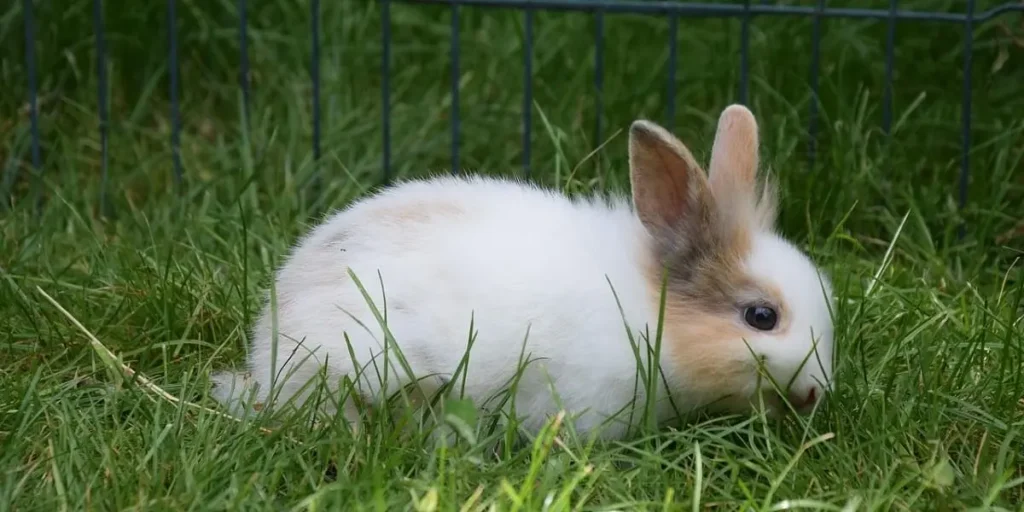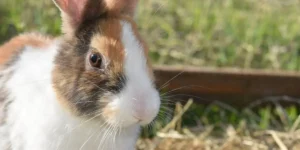Table of contents
Adopting a rabbit and watching it grow by your side is very rewarding. However, before you give in to temptation, it’s useful to know how long rabbits generally live and what you can do to help them enjoy a long, healthy life.
Key Takeaways
- Smaller rabbits tend to live longer than larger ones.
- Lifespan depends on breed, diet, housing conditions (enclosure, cage, free‑roam space), and veterinary care.
- Certain warning signs can reveal declining health and possibly the end of a rabbit’s life.
How Long Can a Pet Rabbit Live?
The life expectancy of a pet rabbit is significantly higher than that of a wild rabbit. In the wild, rabbits live an average of about three years due to predators, disease, and harsh conditions.
In contrast, pet rabbits can often reach 10 years of age, and some live up to 12–15 years in ideal conditions. They benefit from secure housing, protection from predators, and regular care. Lifespan varies depending on breed, living conditions, and the quality of daily care.
Progress in veterinary medicine, along with better-informed owners, has greatly improved the comfort and longevity of pet rabbits. Regular checkups, proper diet, vaccination when appropriate, and good hygiene all help support a long life.
Life Expectancy by Domestic Rabbit Breed
How Long Does a Dwarf Rabbit Live?
Domestic dwarf rabbits have a remarkably long lifespan compared with many larger breeds. Under optimal conditions, they usually live between 8 and 12 years. This miniature type is generally robust, and some individuals even exceed 14 years when they receive appropriate care.
Exceptional cases show what is possible when all needs are perfectly met: safe housing, high‑quality nutrition, and regular veterinary monitoring. These examples underline the importance of a suitable environment and attentive daily care.
To optimize the life expectancy of a dwarf rabbit, plan for routine vet visits, a balanced diet based mainly on high‑quality hay, and a spacious, enriching habitat. Vaccination and spay/neuter, when recommended by your veterinarian, can also help reduce the risk of certain illnesses and behavioral problems.
How Long Does a Dwarf Lop Rabbit Live?
Dwarf lop rabbits commonly reach 8 to 10 years of age. Their small size gives them a natural advantage in terms of longevity compared with large and giant breeds.
Owners quickly notice that these lop‑eared rabbits need special attention to their ears. Regular inspection and gentle cleaning of the ear canals can help prevent infections and support long‑term health. A calm environment and a comfortable, draft‑free habitat also contribute to their well‑being.
Genetics plays an important role as well. Carefully selected lines from responsible breeders tend to be sturdier and less prone to certain diseases. In the best conditions, some dwarf lops can live up to 12 years.
Life Expectancy in Giant Rabbit Breeds
Giant breeds such as the Flemish Giant or the French Lop generally have shorter lifespans, typically between 5 and 8 years. Their large body mass places greater strain on the heart, joints, and overall metabolism, which partly explains this reduced longevity.
To help them live as long and comfortably as possible, it is essential to monitor their diet closely. A high‑quality hay‑based diet with varied leafy greens helps maintain a healthy weight and supports digestion. These large rabbits also need plenty of space to move around and stretch out.
Dental health is particularly important: giant rabbits are prone to chewing difficulties and dental overgrowth. Providing safe items to chew, as well as regular veterinary dental checks, is crucial. Daily access to fresh, clean water and regular playtime also contribute to their vitality.
Which Factors Influence a Rabbit’s Life Expectancy?
Environment and Lifestyle
A spacious, secure habitat is the foundation of a long, fulfilling life for a pet rabbit. A cage or pen of at least one square meter (about 10–11 square feet) of floor space, combined with daily time in a larger exercise area, supports both physical and mental activity.
Ambient temperature is another key factor. Ideally, the environment should be kept between about 59°F and 68°F (15–20°C) and protected from drafts and sudden temperature changes. A calm household helps reduce stress, which is a major factor that can shorten a rabbit’s life.
Thoughtful habitat setup is essential: provide hiding places, rabbit‑safe toys, cardboard tunnels, and raised platforms to climb on. Environmental enrichment encourages natural behaviors such as exploring, chewing, and jumping. These activities support overall health and strengthen the immune system.
Diet and Veterinary Care
Just like cats or dogs, rabbits need a balanced, species‑appropriate diet to stay healthy. Nutrition directly affects dental wear and digestive function, both of which are critical in rabbits.
Hay should make up around 70–80% of the total diet and must be of good quality. Different types of hay offer different benefits. For example, timothy hay is often recommended for adult rabbits and can help support urinary health when used as part of a balanced diet.
Pelleted rabbit food is another important component but must be given in controlled amounts. If a rabbit eats too many pellets, it may gain excessive weight, which can lead to other health issues. For this reason, pellets should not be offered free‑choice but measured out according to your veterinarian’s recommendations.
Regular veterinary care is essential: routine exams, dental checks, parasite control, and vaccinations if recommended in your area all help prevent disease or catch problems early, when they are easier to treat.
How Spaying or Neutering Affects Lifespan
Spaying or neutering is a major medical step that can significantly increase a rabbit’s life expectancy, especially in females. Unspayed does have a very high risk of developing uterine tumors between 2 and 5 years of age, which can severely threaten their survival.
This surgery can add an estimated one to two extra years to the average lifespan of many domestic rabbits. By removing the reproductive organs, the risk of cancers of the uterus, ovaries, or testes is greatly reduced. Spayed or neutered rabbits also tend to be calmer and less stressed, which further supports their overall health.
Once hormone levels stabilize after surgery, many rabbits show fewer territorial behaviors and destructive tendencies. Spaying or neutering before two years of age generally offers the best protection against reproductive diseases, according to many veterinarians.
How to Help Your Rabbit Live Longer
Social interaction is important for a rabbit’s emotional and physical well‑being. Some owners choose to adopt a second compatible rabbit, which can greatly reduce daily stress and encourage natural activity such as grooming and playing.
Mental enrichment deserves just as much attention as physical exercise. Offer a variety of toys to chew, balls to push, and tunnels to explore in order to stimulate curiosity. These activities provide positive outlets for energy and help strengthen the immune system.
A thoughtful daily schedule also supports vitality: alternate rest and activity, keep feeding times consistent, and establish a routine for handling and play. Plan regular visits with a veterinarian who is experienced with small mammals or exotic pets. Preventive care, including vaccines where appropriate, deworming, and flea control, can stop many health problems before they become serious.
What Is the Maximum Age for a Pet-Store Rabbit?
Rabbits bought from pet stores generally live around 5 to 8 years. This shorter average lifespan may be linked to genetics and, in some cases, to less‑than‑ideal breeding or early housing conditions.
However, with regular veterinary monitoring from the moment of adoption, it is possible to significantly extend their life. Under the best conditions – balanced diet, proper housing, enrichment, and early spay/neuter – some pet‑store rabbits can reach 10 years of age.
Longevity also depends on breed and size. Smaller rabbits, such as dwarf breeds, generally age better than large or giant breeds. For the best chances of a long, healthy life, many experts recommend adopting from reputable breeders or rescues that prioritize health and proper socialization.
What Are the Signs of the End of a Rabbit’s Life?
Several signs can indicate that a rabbit is unwell or nearing the end of its life. Any sudden change in behavior or appearance should be taken seriously and discussed with a veterinarian.
- Loss of appetite: Rabbits that stop eating, especially when dental problems are present, must be seen by a vet quickly. Dental disease is common and can lead to dangerous digestive shutdown.
- Lethargy: A rabbit that becomes unusually quiet, stays hunched, or seems to conserve energy may be showing signs of severe fatigue or illness.
- Changes in droppings: Very small, misshapen, or soft droppings can signal digestive problems that require urgent attention.
- Abnormal breathing: Wheezing, labored, or unusually deep breathing may appear in rabbits with advanced disease or at the end of life.
Many factors influence how long a rabbit can live: breed, lifestyle, genetics, diet, and access to veterinary care. To offer your rabbit the best possible life, stay attentive to any changes in its behavior or health and seek professional advice as soon as something seems wrong.


